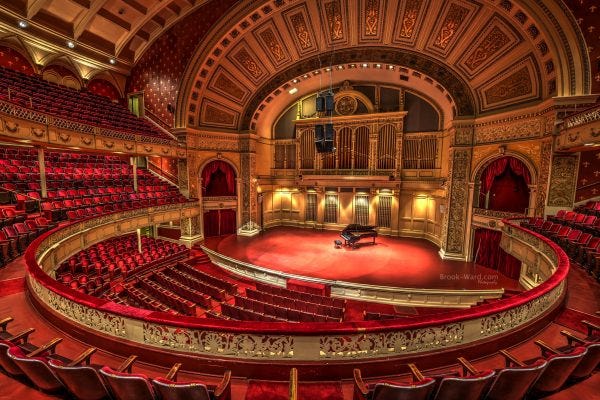Season 29, Day 15 - "Practice Round"
It's Hall week, and today's quiz is inspired by Carnegie Hall.
Carnegie Hall
Rumor is that a pedestrian on Fifty-seventh Street, Manhattan, stopped Jascha Heifetz and inquired, "Could you tell me how to get to Carnegie Hall?" "Yes," said Heifetz. "Practice!"
Carnegie Hall is a prestigious concert venue in New York City. Located in Midtown Manhattan at 57th Street and 7th Avenue, it was named for and financed by Scottish-American steel magnate and philanthropist Andrew Carnegie. Famed Russian composer Peter Ilyich Tchaikovsky was the guest conductor when it opened on May 5, 1891. Pianist Jan Paderewski, who later became the prime minister of Poland, is credited with demonstrating Carnegie Hall’s viability as a performance venue with a series of sold out concerts in its opening year. The first world premiere at Carnegie Hall was Czech composer Antonin Dvorak’s “New World” Symphony in 1893; George Gershwin’s An American in Paris also debuted there. Russian-American pianist Vladimir Horowitz made his U.S. debut at Carnegie Hall in 1928, famously returned to the Hall in 1965 after a 12-year retirement, and first appeared on television in a 1968 concert taped there. Other pianists associated with Carnegie Hall include Sergei Rachmaninoff and Arthur Rubinstein, the latter of whom appeared a record 136 times between 1906 and 1976. Carnegie Hall was home to the NBC Symphony Orchestra until the retirement of conductor Arturo Toscanini (Vladimir Horowitz’s father-in-law) in 1954 and the New York Philharmonic until they moved to Lincoln Center in 1962. In the 1960s, Ukrainian-born violinist Isaac Stern led the campaign to save Carnegie Hall from demolition, and the Hall’s main auditorium is named for him in recognition of his efforts. The winner of the Van Cliburn International Piano Competition (held every four years in Fort Worth, Texas) traditionally performs at Carnegie Hall. According to the Carnegie Hall Data Lab, “The Star-Spangled Banner” is the most commonly performed piece at Carnegie Hall; also ranking highly is Handel’s Messiah. Not just a place for classical music, Carnegie Hall has hosted many jazz, rock, and country artists over the years as well: Benny Goodman became the first jazz bandleader to perform at Carnegie Hall in 1938, the Beatles and Rolling Stones played there during both bands’ first trips to the U.S. in 1964, and Buck Owens and his Buckaroos proved there was a country audience in NYC when he recorded a live album at the Hall in 1966. Judy Garland won the Album of the Year Grammy for Judy at Carnegie Hall, becoming the first woman to win that coveted award. Garland’s comeback performance at Carnegie Hall even spawned a cover album also recorded at Carnegie Hall: singer-songwriter Rufus Wainwright’s Rufus Does Judy at Carnegie Hall. Many other notable artists across all genres of popular music have recorded live albums at Carnegie Hall, far too many to list here in full; some examples include Ella Fitzgerald, Harry Belafonte, Miles Davis, Nina Simone, Frank Zappa, Jethro Tull, Chicago, Stevie Ray Vaughan, Bob Dylan, Bill Withers, the Beach Boys, and the Buena Vista Social Club (the legendary Cuban ensemble that was the subject of the 1999 documentary of the same name). The Carnegie Deli, a well known Jewish delicatessen, was named for Carnegie Hall (the deli’s original location near Carnegie Hall closed in 2016). Carnegie Hall is the subject of a famous old joke (one variation quoted above), cementing it in the consciousness as a platform for the world’s best musicians.




